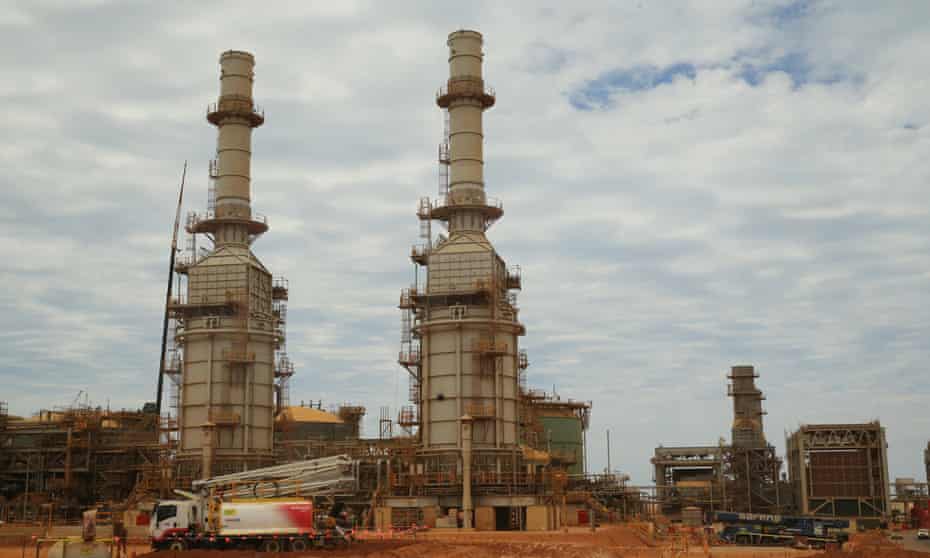CONSERVATIVE PRO STATE CAPITALISM FOR NUKES
Liberals leaving nuclear's future 'to the market' while other countries bet big
'We have very ambitious targets and goals from a greenhouse gas perspective, but no concrete plans, in terms of how we're going to use clean electricity to meet those objectives'
Author of the article: Ryan Tumilty
Publishing date: Nov 13, 2021 •
Its advocates say that nuclear power is the key to meeting the growing need for electricity while cutting global carbon emissions.
OTTAWA – While other major economies are making big bets on nuclear energy to get to a carbon neutral future, Canada’s Environment Minister Steven Guilbeault says the market will decide which carbon-free technologies replace fossil fuels.
At the Glasgow climate summit, which ended Friday, major economies agreed on the need to cut global carbon emissions to avoid the worst impacts of climate change. To do that, means more power to charge electric cars, heat homes and even run heavy industries like steel plants.
The U.K. government gave famed engine manufacturer Rolls Royce $350 million this week to help the company build a new generation of small modular nuclear reactors. China also announced plans to build up to 150 new reactors. And France, which was set to reduce its reliance on nuclear power, announced this week it would instead build more plants.
“We are going, for the first time in decades, to relaunch the construction of nuclear reactors in our country and continue to develop renewable energies,” the country’s president Emmanuel Macron said in a televised address to the nation.
This was meant “to guarantee France’s energy independence, to guarantee our country’s electricity supply and achieve our objectives, in particular carbon neutrality in 2050,” he said.
For Canada, Guilbeault said nuclear will have to compete alongside technologies like wind and solar, which are becoming the least expensive types of power available.
“It’s not up to the government to decide which of these technologies will thrive. It’s going to be up to the market,” he said to reporters in Glasgow.

Why provinces are uniting to build small modular nuclear reactors
The Liberals have helped fund some companies pursuing small modular reactors or SMRs, an industry term for reactors that generate smaller, though still considerable amounts of power.
The reactors are still in the planning and development stage, but they’re promised to be safer and cheaper than current large reactors and could be built in factories and then delivered onsite. They could also be used in remote communities and they generate significantly less waste than traditional reactors.
Natural Resources Minister Jonathan Wilkinson said the government is supporting early projects, but they will have to prove themselves.
“We have supported the development work. And certainly I look forward to seeing what that looks like when they are demonstrated at scale and when we actually have a sense of what the commercial economics of those systems will be.”
Conservative MP Dan Albas said the Liberals are missing an opportunity to take a bolder stance and Guilbeault should be a much more ardent backer of the technology.
“Conservatives believe that nuclear energy is essential to lowering GHG emissions in Canada and taking action on climate change. By failing to clarify his position, Minister Guilbeault calls into question the safety and relevancy of nuclear energy and the countless Canadians that it employs.”
John Gorman, president and CEO of the Canadian Nuclear Association, said the Liberal government has done a lot to help the industry, but the country will need a lot more electricity to achieve net zero.
“We have very ambitious targets and goals from a greenhouse gas perspective, but we have no concrete plans, in terms of how we’re going to use clean electricity to meet those objectives,” he said.
Gorman says solar, wind are great technologies, improving all the time, but nuclear has to be part of the equation to meet the coming increased demands for electricity.

The Bruce Power nuclear generating station in Kincardine, Ont., produces enough power for 30 per cent of the province’s needs.
PHOTO BY BRUCE POWER/FILE
He said the expertise and talent is available in Canada, but the government needs to send a sign to get companies building the next generation of plants.
“The part that’s missing right now is the actual signal from the federal government and from the provinces and their systems operators that we actually are going to have that demand for electricity and signal that we got to start building,” he said.
One company that is close to building is Global First Power, a partnership between the Ultra Safe Nuclear Corporation (USNC) and Ontario Power Generation (OPG). The company is planning on setting up a small reactor at the Chalk River facility north of Ottawa.
Ken Darlington, a vice-president with USNC, said their reactor is a test of the technology, but it’s smaller scale, something that could be used in remote communities or in mines.
The reactor is the first to enter the Canadian Nuclear Safety Commission’s formal licensing process and it would be able to generate five megawatts of power, enough to power a small community of about 5,000 people.
Darlington said there are a lot of northern communities especially that rely on large diesel generators and reactors like this could get them off those permanently.
He said Canada has a top regulatory system, but it will need some changes to adapt to the smaller projects that are coming. He said it’s not about looser regulations, but about ones that don’t treat massive power plants the same as the newer, smaller reactors companies are planning.
“The nuclear regulations, they’re all predicated around very large-scale projects.”
Darlington said there is a lot of hope in the industry right now, but the government does need to do more.
“There has been financial support to nuclear projects in Canada over the last couple of years. But do they need to step up? I would say yes.”
In addition to the Chalk River project, Ontario Power Generation has a second modular reactor proposal at the Darlington Nuclear plant just east of Toronto. It’s expected to pick one of three companies soon to build a 300-megawatt reactor beside the existing plant.

Environment Minister Steven Guilbeault says nuclear will have to compete alongside technologies like wind and solar.
PHOTO BY PHIL NOBLE/REUTERS/FILE
Four provinces, Ontario, Alberta, Saskatchewan and New Brunswick, have signed onto an agreement to work together on small modular reactors and its possible the reactor OPG picks will be used in other provinces eventually.
Gorman said there are a lot of companies working to make the reactors a reality.
“We’ve got 12 different technologies that are going through the review and licensing process right now. And they range from technologies that produce one megawatt of electricity up to technologies that produce 300 megawatts of electricity.”
On Lake Huron in southwestern Ontario, Bruce Power’s nuclear plant is the largest in the world producing enough power for 30 per cent of the province’s needs.
It and the province’s other large nuclear stations Pickering and Darlington account for the majority of Ontario’s power and have allowed the province to phase out coal generation, the biggest carbon reduction achieved anywhere in North America so far.
Chris Keefer, President Canadians for Nuclear Energy, said small modular reactors are worth exploring, but Canada should also be building new large plants again, because the country will need the clean power.
He said the Liberals and Guilbeault should have been trumpeting how helpful nuclear has been and the country’s technology.
“In my mind, he should have been saying, you know, we’re very proud of what we’ve accomplished,” he said.
The CANDU reactor that powers Pickering and Darlington has been exported to countries all over the world and Keefer said it is a tremendous economic opportunity for the country as well.
The Pickering Nuclear plant is set to be shut down in 2025 and when it does Ontario will begin burning more natural gas to make up the difference.
“We are a world class decarbonized grid, and we’re going to be going up to the middle of the pack again, which is just shocking in the middle of this climate crisis,” Keefer said.
Britain’s investment in nuclear also came with regulatory changes that allow the plants to be financed even while under construction, reducing their overall interest costs and reducing the cost of power. He said Canada could take some of the same steps.
“They need to include nuclear and be proud of nuclear as a green technology, which will encourage investors to do that and de-risk capital.”
Before Gorman worked for the nuclear industry he worked for solar firms. He said more solar and wind projects will be needed, but they haven’t shifted any country off of fossil fuels on their own.
“When I started in that field, we had 36 per cent non-emitting electricity on the world’s grids. And 20 years later, you know, today after trillions of dollars of investment and those incentives and all of the market reform and the huge rollout of wind and solar, we’re still at 36 per cent.”
Gorman acknowledges the industry has a stigma of being high cost. Pickering, Darlington and Bruce generating stations all dramatically overshot their initial construction budgets when they were first constructed, but he argues SMR technology will bring down costs.
Nuclear is also considered dangerous due to disasters at Chernobyl and Fukushima. Japan and Germany both shut down most of their nuclear energy after Fukushima and both countries are now burning more coal.
Gorman said the industry definitely has work to do, but he is confident when Canadians get all the facts they will support its carbon-free power.
“The more that people understand the real facts behind nuclear and can get beyond all that stigma and misinformation, the more supportive they are.”
He said the world needs more power and needs it quickly.
“We don’t have 20 years to stay even keeled. We have to clean up the last two thirds of the world’s grids and then we got to double or triple the amount of electricity we have.”
– With additional reporting by Reuters














